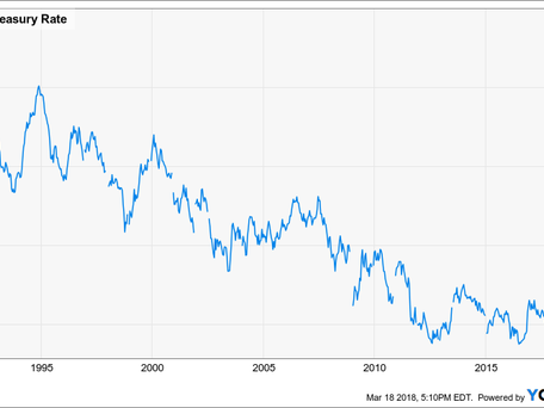
Do you know how much money you’ll need to save for retirement? Chances are good that you don’t.
More than 8 in 10 Americans have no idea how much retirement savings they’ll need when leaving the workforce, according to a recent Merrill Lynch survey. And, unfortunately, Americans who think they’ve got it all figured out underestimate what they need because of a few big misconceptions.
Here are three big mistakes you may be making that could lead you to shortchange your savings goals.
1. You believe in the 4% rule
The 4% rule is a common method of determining how much you can safely withdraw from a retirement account without running out of money. The premise of the 4% rule is that when you first retire, you withdraw 4% of your retirement account balance in the first year. In each subsequent year, you adjust this original withdrawal amount upwards based on inflation. If you stick to this schedule, the idea is that you’ll never run out of cash.
The 4% rule was devised in the early 1990s by a financial advisor named William Bengen and was based on an analysis of historical data from 1926 to 1976. In 1990, when Bengen introduced this rule, the 10-year treasury rate was 8.21%. In 1991, it was 8.09% and in 1992, it was 7.03%. In 2018, it’s 2.85% — and most experts don’t see any big increases on the horizon.

Interest rates are obviously much lower now than in the 1990s, and many financial experts don’t think the stock market will keep pace with historical returns either.
In practical terms, this means you’ll probably earn a lower rate of return on retirement savings as you grow your nest egg and during retirement. In fact, your money may not grow enough during retirement to allow you to take 4% out without running out of cash.
Warnings about the problems with the 4% rule abound, and are backed up by hard data. A 2013 study found when using historical averages, the 4% rule gave you a 6% chance of running out of money — but with the intermediate-term real interest rate below historical averages, the chance of running out of money following the 4% rule went up to 57%.
If you’re assuming you’ll be able to withdraw 4% from your savings, you should revise your assumptions downward. You can use Required Minimum Distribution tables from the IRS to come up with a new estimate, or you can base your retirement plans on the idea you’ll be able to take out around 2.5% to 3% annually — adjusting the 4% guidance to a more realistic one, given lower rates.
2. You’re forgetting about medical expenses
According to a Nationwide survey, the majority of adults age 50 and over think they’ll spend Social Security benefits in retirement primarily on housing, food, and basic living expenses. Most expect 29% of Social Security will go to housing, compared with just 20% to healthcare.
In reality, 59% of retirees spend more of their Social Security benefits on healthcare costs. Among those who claim Social Security at 62, as much as 64% of their Social Security benefit could be consumed by healthcare costs, according to Nationwide.
Around 3 in 4 retirees also indicate health issues started earlier than expected, and close to a quarter of retirees report costs of healthcare have prevented them from having the retirement they anticipated.
If you think you won’t have to worry about healthcare because Medicare will cover you, you’re going to be in for a big shock. Employee Benefit Research Institute estimates a senior couple in the 90th percentile for prescription drug use will need close to $370,000 to have a 90% chance of covering costs, even with a Medigap plan.
You need to plan for medical costs when setting retirement savings goals. Consider investing in a health savings account, as you can invest tax-free while working and withdraw funds tax-free for qualifying health expenses.
3. You’re not considering taxes
When you look at your projected retirement account balances, you probably think your 401(k) or IRA is bigger than it actually is. The problem is, you’re likely forgetting about taxes that have to be paid upon withdrawals, unless you have a Roth 401(k) or Roth IRA.
If you are over 59 1/2 and follow the rules for withdrawals, you won’t have to pay any extra penalties for taking money out of a 401(k) or IRA. But you will be taxed on distributions as ordinary income.
If you make between $9,526 and $38,700 as a single or between $19,051 to $77,400 if married filing jointly, you’d be in the 12% tax bracket in 2018. This means a $10,000 withdrawal from your 401(k) would net you $8,800.
You could end up with even less to spend if distributions from your 401(k) or IRA end up raising your income enough that your Social Security benefits become taxable or your Medicare premiums rise. Depending how much withdrawals increase your income, you could end up owing taxes on between 50% and 85% of Social Security benefits, which would mean a big portion of your withdrawn money would go to the government.
And if you’re young now, there’s a good chance taxes will be higher by the time you’re actually a senior because taxes may need to be raised to tackle the national debt and shore up entitlement programs.
If you don’t want to worry about how taxes will affect your retirement savings, consider investing in Roth accounts instead. Yes, it will cost more now — but you won’t have to worry about high taxes as a senior. If you opt for traditional 401(k) or IRA accounts, consider taxes when estimating the income your investments will produce.
Deciding how much to save for retirement
When deciding how much to save for retirement, it’s always best to err on the side of saving too much rather than saving too little.
You can create a detailed plan to decide exactly how much to save that takes taxes, healthcare, and projected returns into account. You can also start saving when you’re as young as possible and aim to save at least 20% of your income to ensure you have enough to live on, no matter what the future holds.
























